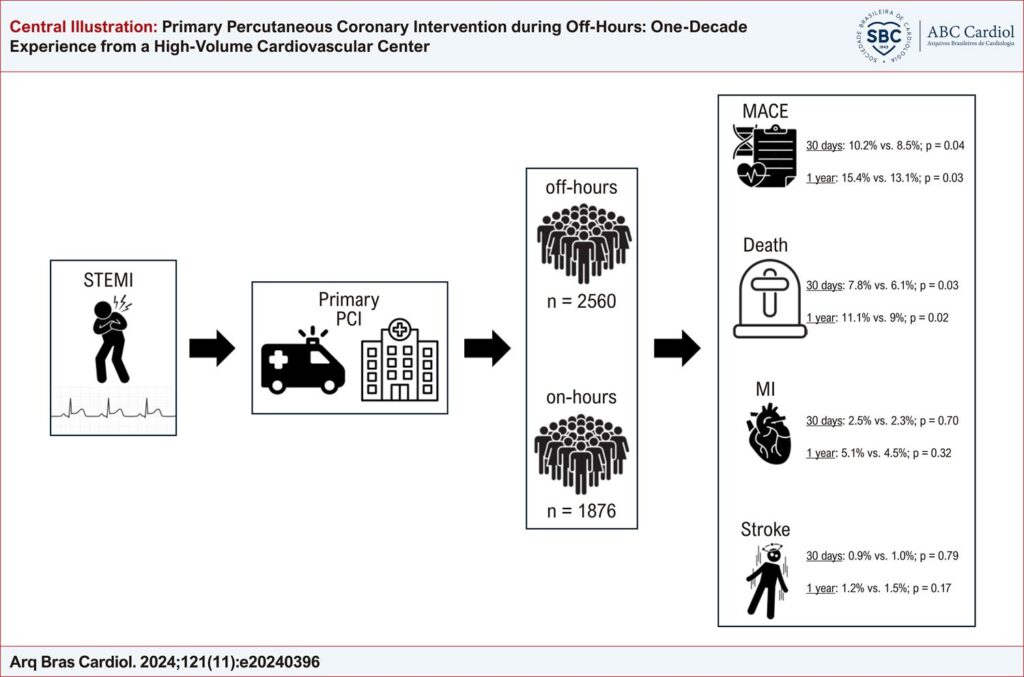Arq. Bras. Cardiol. 2024; 121(11): e20240396
Primary Percutaneous Coronary Intervention during Off-Hours: One-Decade Experience from a High-Volume Cardiovascular Center
This Original Article is referred by the Short Editorial "Worse Prognosis of STEMI Patients during Off-Hours: What are we Missing?".
Abstract
Background
The impact of performing a primary percutaneous coronary intervention (pPCI) off-hours on clinical outcomes is not well established.
Objective
Compare characteristics and major adverse cardiovascular events (MACE) of pPCI off-hours versus on-hours in a high-volume cardiology center.
Methods
Prospective cohort of patients who underwent pPCI for ST elevation myocardial infarction (STEMI) from 2009 to 2019. We defined off-hours pPCI as workdays from 8pm to 7:59 am as well as weekends and holidays. We compared patients treated on- and off-hours as to baseline characteristics and 1-year events.
Results
A total of 2,560 patients were treated off-hours and 1,876 patients treated on-hours. The groups were similar for most of the baseline characteristics. A higher thrombus burden was seen in patients treated off-hours (50% x 45%; p < 0.01), and in this group the radial access was more frequently used (62% x 58%; p = 0.01). Procedural success was not statistically different between the groups (95.7% x 96.4%; p = 0.21). MACE rates were higher in patients treated off-hours at 30 days (10.2% x 8.5%; p = 0.04) and at one year of follow-up (15.4% x 13.1%; p = 0.03), driven by higher death rates at 30 days (7.8% x 6.1%; p = 0.03) and at 1 year follow-up (11.1% x 9.0%; p = 0.02).
Conclusion
In a high-volume cardiology center, clinical characteristics, door-to-balloon times, procedural pPCI success and complication rates of STEMI patients treated on and off-hours were similar. However, patients treated off-hours presented higher MACE and mortality rates, in spite of similar MI and stroke rates.
352

